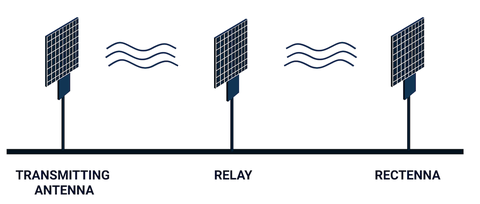POPULAR MECHANICS – Picture the street outside your home. Now erase the power lines. Imagine interstate highways without the unsightly cable towers that dot the expansive United States landscape. This could be the wireless future of energy if a partnership between New Zealand’s government and a startup called Emrod works out—and it all dates back to the wildest dreams of Nikola Tesla.
Wireless electricity sounds like science fiction, but the technology is already realized and primed for a utility-scale case study. And in this first-of-its-kind pilot program, Powerco—New Zealand’s second-largest electricity distributor—will test Emrod technology beginning in 2021.
“IT SOUNDS FUTURISTIC AND FANTASTIC BUT HAS BEEN AN ITERATIVE PROCESS SINCE TESLA.”
The companies plan to deploy the prototype wireless energy infrastructure across a 130-foot expanse. To make it possible, Emrod uses rectifying antennas, a.k.a. “rectennas,” that pass microwaves of electricity from one waypoint to the next: a solution well-suited to New Zealand’s mountainous terrain. Specialized square elements are mounted on intervening poles to act as pass-through points that keep the electricity humming along, and a broader surface area “catches” the entire wave, so to speak.
“We’ve developed a technology for long-range wireless power transmission,” says Emrod founder Greg Kushnir. “The technology itself has been around for quite a while. It sounds futuristic and fantastic but has been an iterative process since Tesla.”
The link to Nikola Tesla, Kushnir admits, is more of an imaginative, feel-good tale than a true genealogy. Tesla considered wireless power in the 1890s, as he labored over his breakthrough “Tesla coil” transformer circuit that generated alternating current electricity, but he couldn’t prove that he could control a beam of electricity across long distances. “The sheer fact that he could imagine it is remarkable, but the sort of technology he was looking to apply wouldn’t have worked,” Kushnir says.
Emrod, by contrast, can keep the beam of electricity tight and focused with two technologies. The first is transmission-related: Small radio elements and single wave patterns create a collimated beam, which means that the rays are aligned in parallel, and will not spread much as they propagate. Second, Emrod uses engineered metamaterials with tiny patterns that effectively interact with those radio waves.
Emrod’s wireless antennas are a medium, like a cable, meaning that their task is to simply connect an electrical supply to customers. Kushnir envisions placing Emrod technology on difficult terrain that links with the sunniest, windiest, or most hydro-friendly points on Earth as these often rural places have the widest gap in electrification.
By eliminating the need for long stretches of traditional copper wiring, Emrod says it can bring power to these regions, which can’t afford the kind of infrastructure that supports the power grid. There could be positive environmental ramifications to this, as well, since many sites that don’t have access to electricity end up leaning on diesel generators for energy.
Emrod’s wireless antennas are a medium, like a cable, meaning that their task is to simply connect an electrical supply to customers. Kushnir envisions placing Emrod technology on difficult terrain that links with the sunniest, windiest, or most hydro-friendly points on Earth as these often rural places have the widest gap in electrification.
By eliminating the need for long stretches of traditional copper wiring, Emrod says it can bring power to these regions, which can’t afford the kind of infrastructure that supports the power grid. There could be positive environmental ramifications to this, as well, since many sites that don’t have access to electricity end up leaning on diesel generators for energy.
Power Without Wires

To wirelessly conduct energy, Emrod generates electricity in a tight and focused beam in the non-ionizing Industrial, Scientific, and Medical band of the electromagnetic spectrum—the portion of the radio band that corresponds to Wi-Fi and Bluetooth frequencies.
From there, a transmitting antenna sends the power through various relay points to a “rectenna” that can safely transport the waves in the same frequency range as the microwave oven in your home. Meanwhile, tiny lasers monitor the rectennas to sense any obstructions between relay points. That way, there is no outside radiation, and no birds are harmed in this transfer of power.

